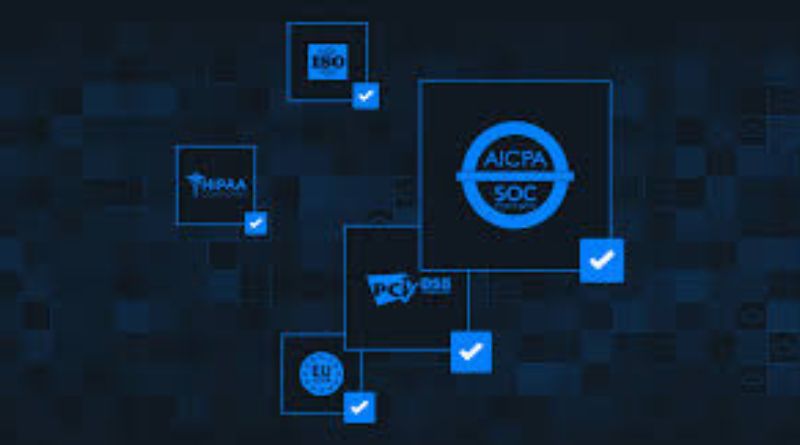In today’s digital landscape, businesses are increasingly adopting multi-cloud strategies to leverage the unique features and capabilities offered by different cloud providers. However, managing compliance requirements across multiple cloud environments can be a complex and daunting task. In this blog post, we will explore the concept of multi-cloud compliance, its challenges, and best practices to ensure security, governance, and regulatory adherence across diverse cloud infrastructures.
Understanding Multi-Cloud Compliance
Multi-cloud compliance refers to the process of adhering to regulatory requirements, industry standards, and internal policies across multiple cloud environments. As organizations adopt different cloud platforms and services, they must ensure that data privacy, security, and governance practices are consistent and compliant across all cloud providers. This involves addressing various compliance frameworks, such as GDPR, HIPAA, PCI DSS, and others, depending on the industry and geographical locations in which the business operates.
Challenges in Multi-Cloud Compliance
Managing compliance across multiple cloud environments presents unique challenges for organizations. These challenges include:
a. Diverse Compliance Requirements: Different regulatory frameworks and standards may have varying compliance requirements, making it challenging to align and implement consistent controls across multiple clouds.
b. Data Governance and Residency: Organizations must address data governance and residency concerns, ensuring that data is stored and processed in compliance with relevant regulations.
c. Visibility and Monitoring: Gaining comprehensive visibility into security controls and monitoring activities across multiple cloud providers can be complex, hindering real-time threat detection and response.
d. Vendor Compliance Assurance: Organizations must assess the compliance posture of their cloud service providers (CSPs) and ensure that they meet the required regulatory standards.
Best Practices for Multi-Cloud Compliance
To effectively manage compliance across multiple cloud environments, organizations should consider the following best practices:
a. Comprehensive Compliance Framework: Develop a comprehensive compliance framework that incorporates relevant regulatory requirements and industry standards applicable to your business. This framework should serve as a reference for implementing consistent security controls across all cloud providers.
b. Risk Assessment and Mitigation: Conduct regular risk assessments to identify compliance gaps and potential vulnerabilities. Implement risk mitigation strategies and controls to address these gaps effectively.
c. Standardized Security Controls: Establish standardized security controls that align with industry best practices and regulatory requirements. This includes encryption protocols, access management, data classification, and incident response procedures.
d. Centralized Governance and Monitoring: Utilize centralized governance and monitoring tools to gain visibility into security controls, access management, and compliance activities across all cloud environments. This facilitates timely detection of security incidents and ensures continuous compliance.
e. Vendor Due Diligence: Perform due diligence when selecting cloud service providers. Evaluate their compliance certifications, data protection policies, and contractual obligations to ensure they meet your organization’s compliance requirements.
f. Ongoing Compliance Audits: Conduct regular compliance audits to validate adherence to regulatory requirements and internal policies. These audits help identify areas for improvement and ensure ongoing compliance.
g. Continuous Employee Training: Provide regular training and awareness programs to educate employees about compliance regulations, data privacy, and security best practices. This promotes a culture of compliance and helps mitigate human error risks.
Automation and Security Orchestration: Leverage automation and security orchestration tools to streamline compliance management processes. Automation can assist with continuous monitoring, threat detection, incident response, and regulatory reporting.
Conclusion
In the era of multi-cloud adoption, organizations must navigate the complexities of multi-cloud compliance to maintain security, governance, and regulatory adherence. By understanding the challenges and implementing best practices, businesses can achieve consistent compliance across diverse cloud environments. From developing a comprehensive compliance framework to standardized security controls, centralized governance, ongoing audits, and employee training, organizations can establish a robust multi-cloud compliance strategy. Embracing automation and security orchestration further enhances the efficiency of compliance management.
Adhering to regulatory requirements and industry standards across multiple cloud providers is essential for maintaining customer trust, mitigating legal risks, and safeguarding sensitive data. By implementing the best practices outlined in this blog, organizations can confidently navigate the complexities of multi-cloud compliance.
As technology continues to evolve and new compliance challenges arise, organizations must remain vigilant. Regularly reviewing and updating their compliance frameworks, staying informed about emerging regulations, and collaborating with cloud service providers will ensure ongoing adherence to compliance standards.
In conclusion, multi-cloud compliance is a critical aspect of cloud adoption for businesses in the digital age. By embracing best practices, organizations can effectively address the challenges associated with managing compliance across diverse cloud environments. By prioritizing security, governance, and regulatory adherence, businesses can leverage the benefits of multi-cloud strategies while maintaining the highest standards of compliance.
